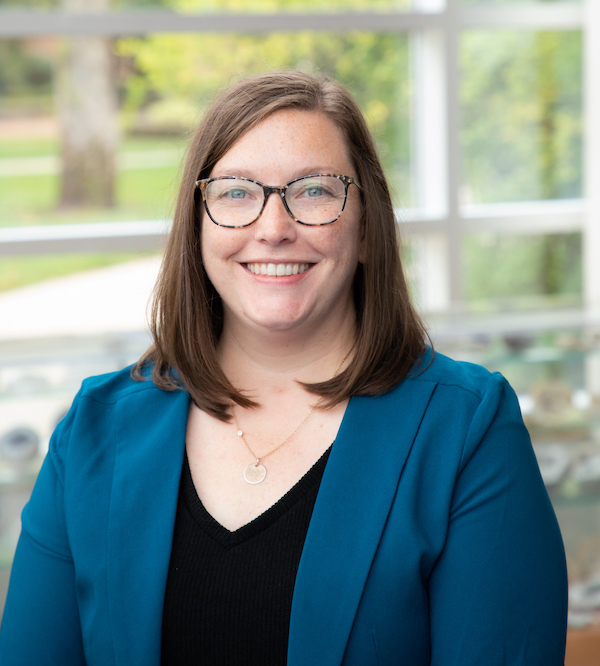Reporter spoke with Bailey Ayers-Korpal, director of marketing and digital strategy in the Office of External Relations, about how the Playbook was developed, how it should be used, and why, even at our student-centered, community-oriented institution, it is still important to think about “the brand.”
‘Brand’ is not a bad word
It’s no secret that the university is in the business of promoting ourselves – that’s how we get students to come here. But building a brand is about much more than student attraction.
“No matter what audience we're reaching out to or talking to, they want to know that it's official. They want to be familiar with it, they want to recognize it,” Ayers-Korpal says. “So if we have different areas doing different things, then there's a risk of someone asking, one, ‘Is this legit?’ and two, ‘Who am I really talking to?’”
These questions might be asked by, for example, prospective students that we're trying to recruit, alumni we’re cultivating for donations or corporations that we're trying to develop partnerships with. “Those people can be in multiple audiences,” Ayers-Korpal explains. “So we want to have this cohesion that really reflects the university and who we are and our reputation, no matter what we're doing or who we're reaching out to.”
UM-Dearborn is in a unique position compared to many other schools in Michigan, in that we have name and logo recognition worldwide based on our affiliation with U-M. But this also makes it vital to assert our own identity, Ayers-Korpal contends. “I think the Block M alone comes with a reputation and a lot of recognition. But then, making sure we're claiming our own stake and asserting who UM-Dearborn is with everything that we do is really important,” she says.
Dreams in Practice
A major part of the Carnegie work was developing a new tagline – “Dreams in Practice” – that will be used in various marketing materials (check it out on the new banners recently installed across campus). The tagline was conceived after gathering feedback from the campus community and external audiences, where the university’s focus on practice-based learning surfaced routinely as something that makes us unique.
“‘Dreams in Practice’ speaks to what students can expect when they come here and what they can expect to graduate with,” Ayers-Korpal says. “But we also know that earning a four-year degree can be life changing for many of our students. We have a lot of first-gen students and we have a lot of nontraditional students. It really is a dream for a lot of our students to get this degree and be able to reach their goals and have good careers. So ‘Dreams in Practice’ really felt like a fit with all of that, and a fit for what we're trying to achieve here at the university.”
It’s personal
Carnegie drew on their research to ask, “If the university were a person, what are the personality traits?” Ayers-Korpal says anyone marketing UM-Dearborn programs to external audiences needs to incorporate these traits into their efforts, using the Playbook as a guide.
“We have three personas that we're working with: the Empowering Nurturer, the Industrious Creator and the Analytical Explorer,” she explains. “All the storytelling that our office does, everything that we write and all our photography will align with these personas to showcase the personalities of the university.”
“The Playbook provides a guide for other partners at the institution, too,” she adds. “If you're communicating with external audiences, using words, images or both, it will help you align with those personas and those personality traits.”
The Playbook is for you (yes, you!)
Aside from the Marketing team, the Playbook should stay near at hand for all web, social media and communications ambassadors, first and foremost. But everyone on campus should refer to it when representing the university visually or in words.
“Whether it’s making sure there's the correct logo on a syllabus or giving a handout to a prospective student or giving a talk in the community, the Tool Kit and the Messaging Playbook are really for anybody who's communicating with an external audience to tell the story of the university,” Ayers-Korpal says. “It's really important to have that consistency, no matter who it is.”
Article by Kristin Palm





